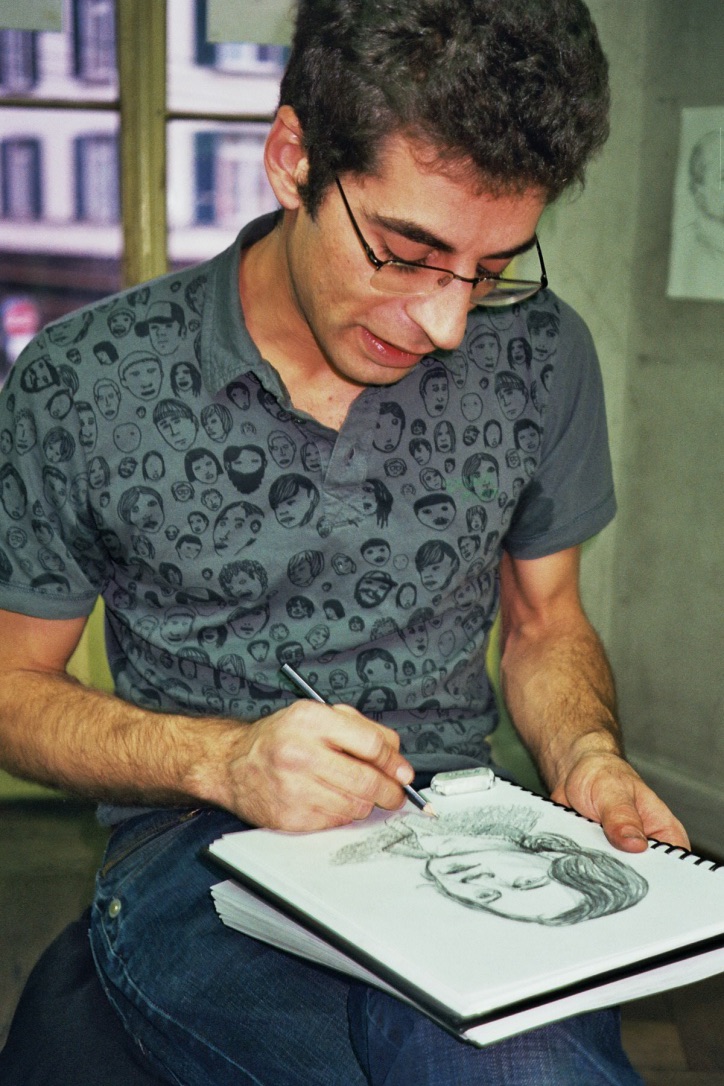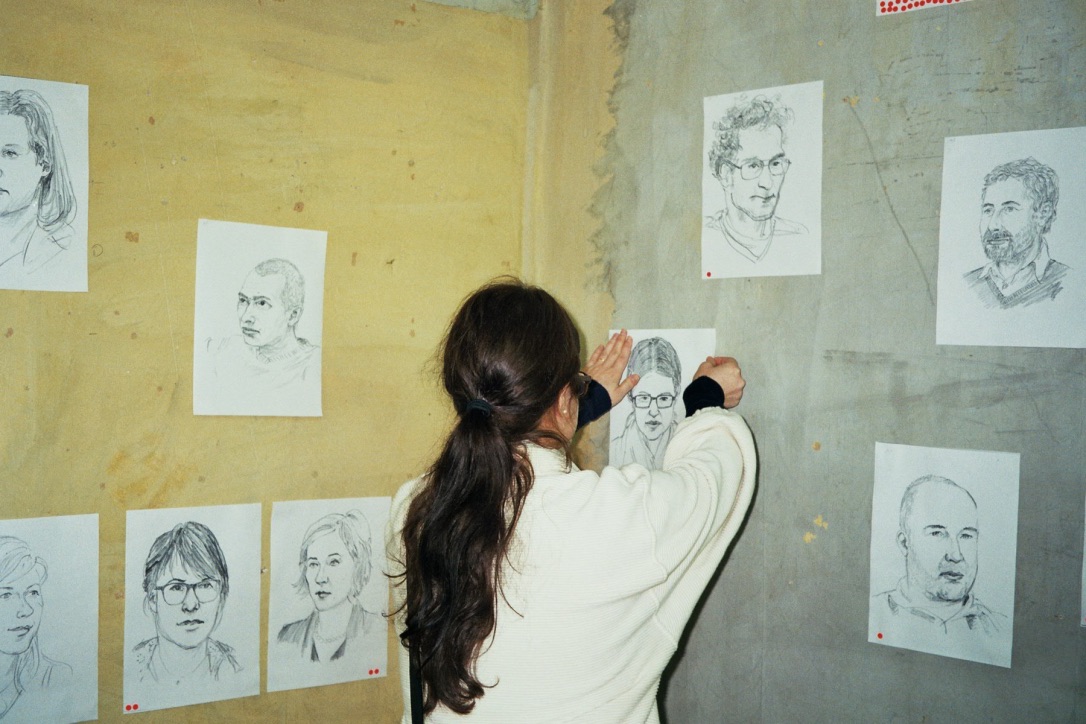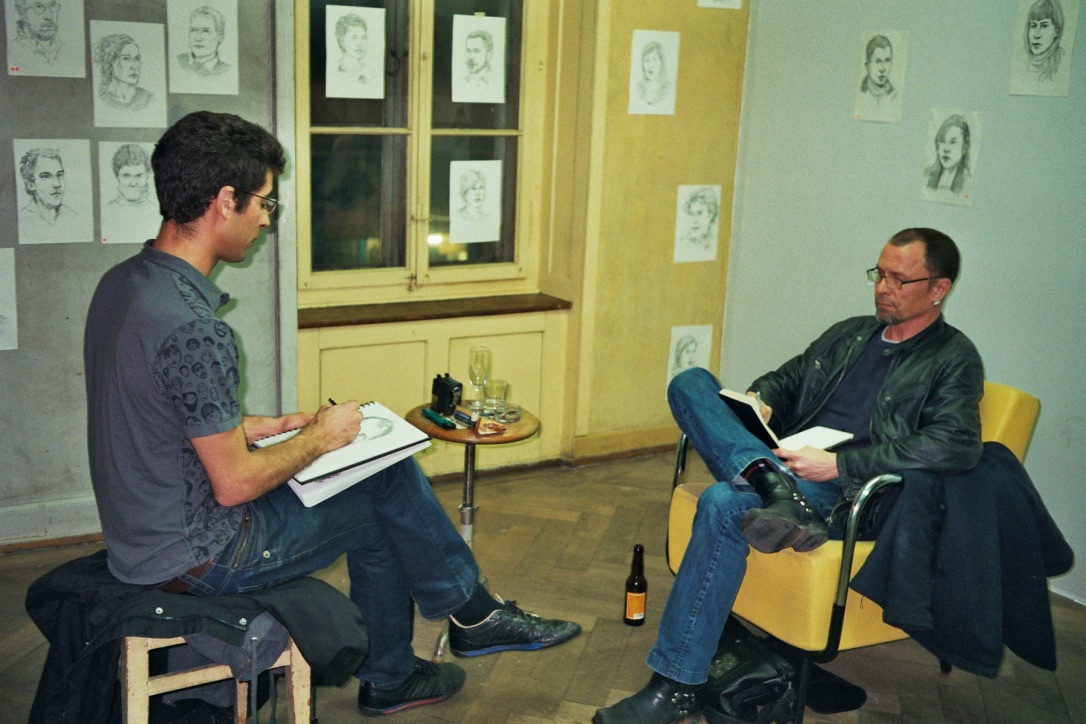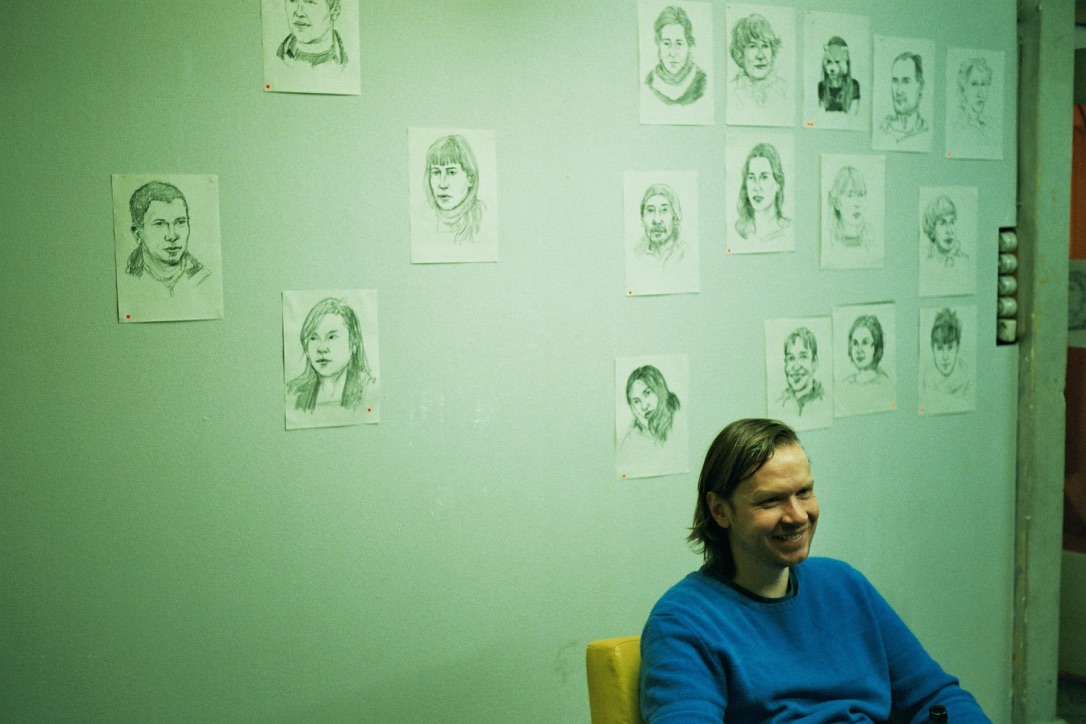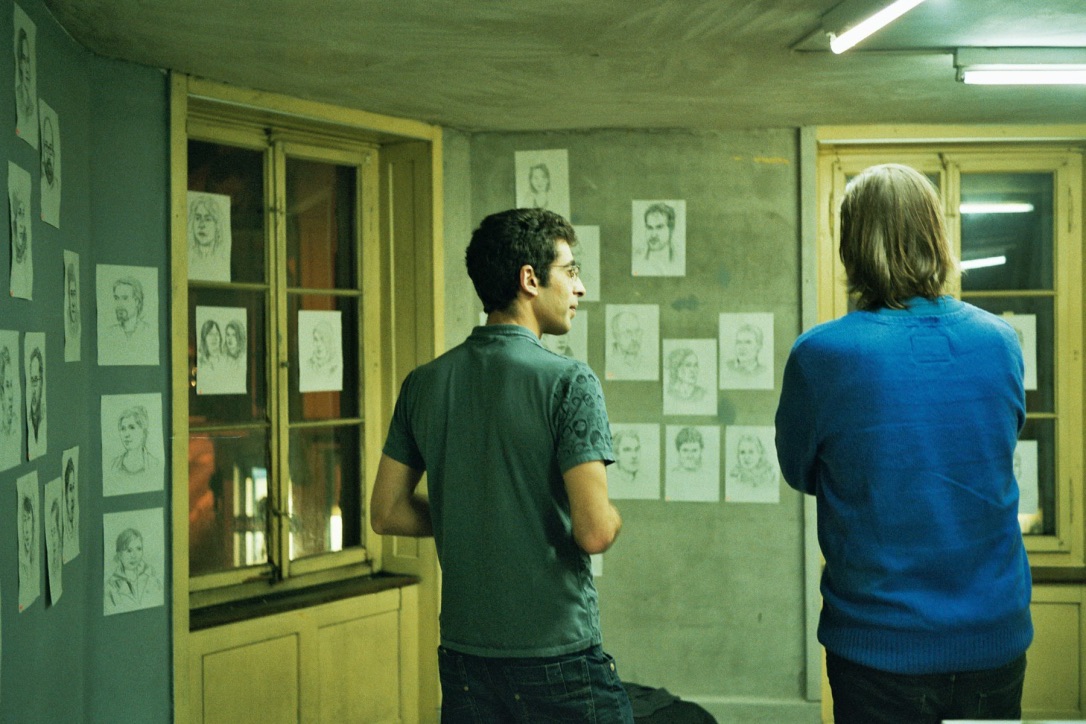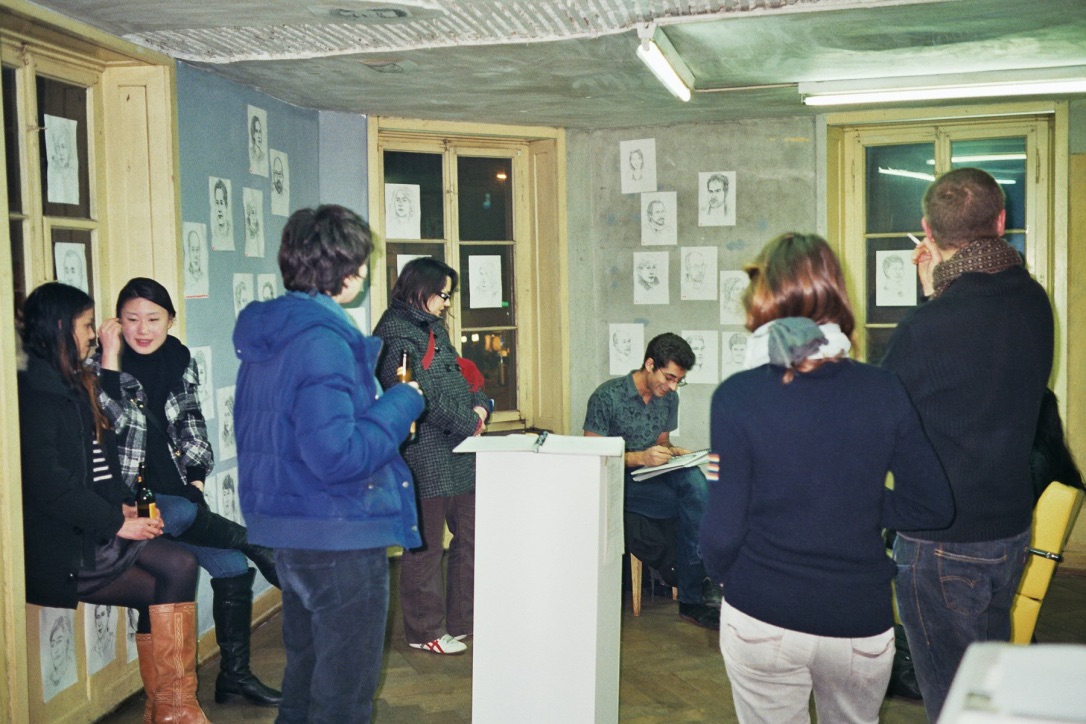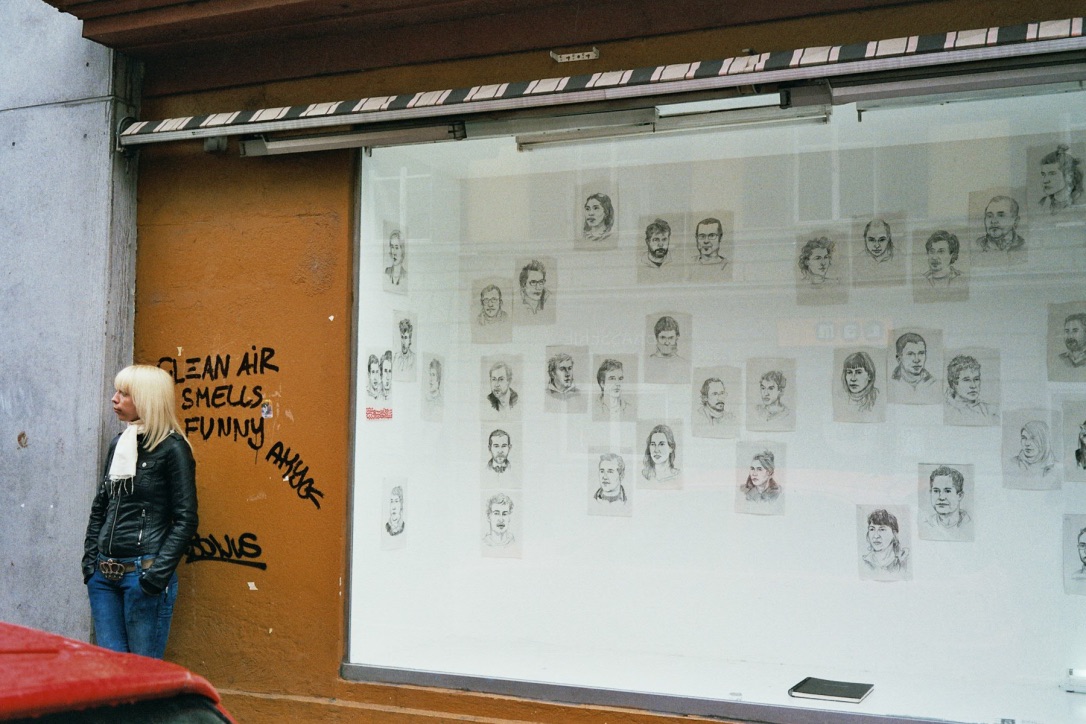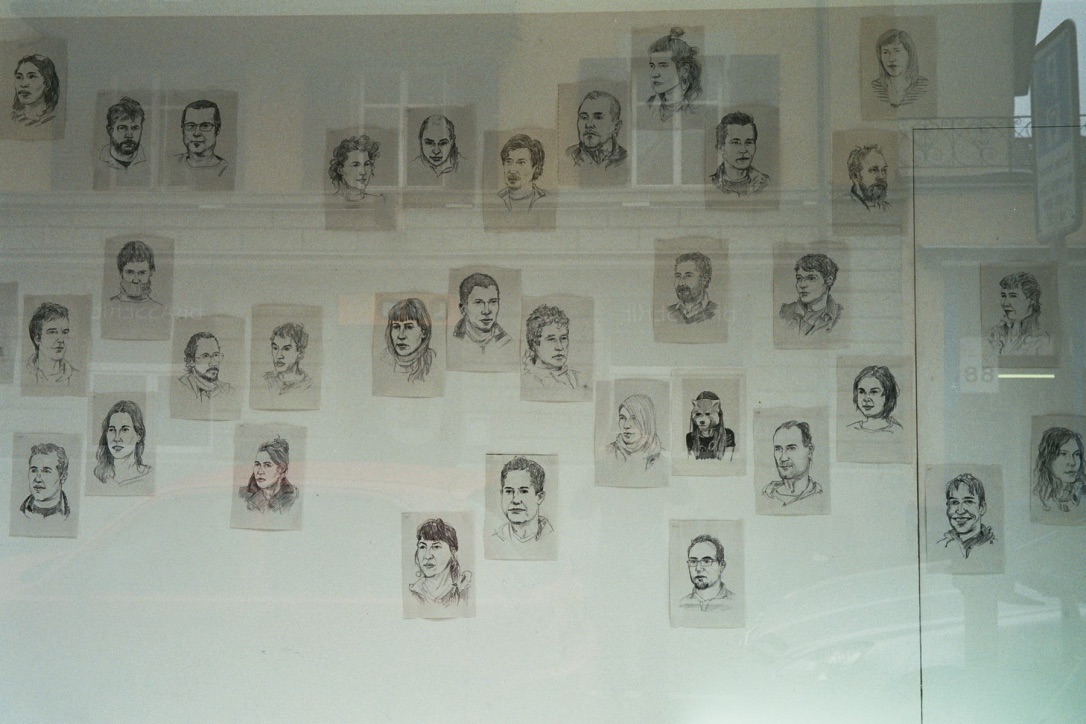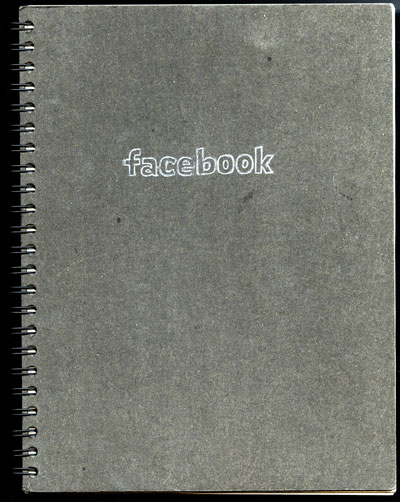With the “Facebook” project, Zurich artist Navid Tschopp is initiating the creation of a real “social network” in the exhibition space. During opening hours, the artist draws portraits of friends and visitors in his sketchbook, the “Facebook”, in a short session and in quick drawings. The people portrayed copy the drawing on the photocopier provided and hang their portrait on the walls in the exhibition space.
As an example and experiment, the aim is to depict a temporary, expanding community in real space. The artist does not draw a group portrait, but the network itself is depicted on the exhibition walls. The audience becomes part of the action, the people portrayed choose their place in the exhibition space, join a group or form a new one.
The artist and his work are connected to the artist’s personal network and are influenced by it. In “Facebook”, the artist’s control over his work slips away to a certain extent, as it is absorbed, reused and reclassified by his analogue social network in the context of the exhibition space. With the orange dot that marks the sale of the work in a gallery, the public distributes its (mutual) “likes”.
Navid Tschopp’s enigmatic and multi-layered work imitates and competes with the digital Facebook system in an analogue way. Digital memory outweighs real memory, the oldest pictorial technique, drawing, asserts itself in real space against the flood of electronic images in cyberspace.
